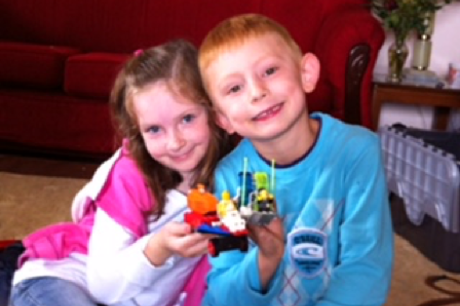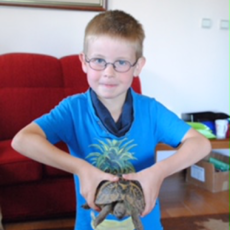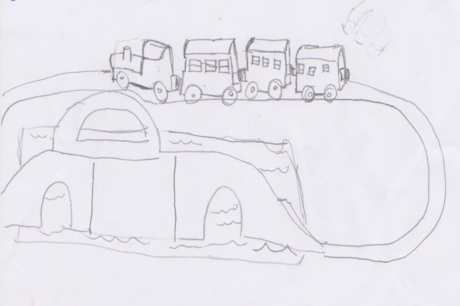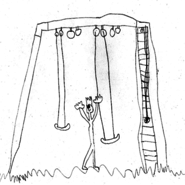Are children too busy? Anne Purdon reflects on her year’s sabbatical in Albania and compares the free-time activity choices of third culture kids (TCKs) growing up in Albania with children in the UK

Albania is one of Europe’s poorest countries, with high levels of unemployment. When I went there to set up an international school, what became immediately apparent was the limited opportunities for children to engage in organised activities. Sports clubs and the like were few, certainly compared to the UK. This posed interesting questions: How did third culture kids (TCKs) in Albania spend their spare time? How did this compare with children in the UK? Do parents and carers here organise too much of their children’s time? Do UK children have space just to be?
I, therefore, decided to embark on research to find out:
- the favourite free-time activity choices of TCKs growing up in Albania and children growing up in the UK
- who initiated the free-time activities
- who was involved in the activities

‘Free-time activities’ could be defined as those activities which are chosen based on the person’s judgment of how they wish to spend their time (Badric, Prskalo and Matijevic, 2015). A different definition suggests free-time activities relate solely to the time children spend with no adult control (Mayall, 2002). For this research, I considered all free-time activities whether organised or not, with the premise that the research is concerned with any activity freely chosen by the child.
Children’s leisure time activities are an important topic for study because ‘a part of children’s everyday life is to play and take part in leisure activities.’ (Berntsson and Ringsberg, 2013, p552). Such choices will influence the establishing of children’s identities and the quality of their future life (Badric, Prskalo and Matijevic, 2015). Several benefits to a child’s physical, cognitive, social and emotional development have been identified through free-time activities (Griffiths, 2011).

METHODOLOGY
The sample comprised two groups of seven children, one in the UK and one in Albania. Each group had four boys and three girls and the age range in each was four to eight years old.
The data collection methods comprised three drawings chosen by the children to represent their favourite free-time activities together with a questionnaire of three questions:
- What are the children’s free-time activities?
- Whose idea was it to do the activity?
- Who was involved in the activity?
Drawings have been used as the main basis for data collection, as these have been found to work well in stimulating conversation with children (De Lange et al, 2012; Driessnack and Furukawa, 2012; Einarsdottir, Dockett and Perry, 2009; Mayaba and Wood, 2015). The drawings also provide a starting point for further discussions (Griffiths, 2011), hence the use of the questionnaire. Qualitative content analysis was used as the basis for initial analysis and coding’ (Shreier, 2012, p1). Thematic analysis was then used as a method of analysing the data further involving searching through data for themes or repeated patterns of meaning (Braun and Clarke, 2006).

ANALYSIS OF RESULTS
1 What are your favourite free-time activities?
The main categories were outdoor activities – sport, outdoor activities – other, media-related, musical instruments, indoor play, special trips. While the Albanian group preferred outdoor activities, the UK sample favoured indoor activities. There were very few organised activities chosen across both samples which is a significant finding. Across both samples, girls chose more outdoor activities, while boys chose more indoor activities.
The types of activities chosen are close to those chosen by children in the study by Griffiths (2011) comparing activity choices of children in the UK and in the USA. When asked why they chose these activities, the responses from the children included the following: because it’s fun, it involves being with family and friends, it’s my talent, I can use my imagination and I like playing on my own.
2 Whose idea was it to choose this activity?
Most activities were said to be initiated by the children themselves. However, the parents did initiate a few activities but only for children in the UK. Siblings, grandparents and friends suggested activities for some of the children across both samples.
3 Who was involved in the activity?
There was a fairly even split between activities with adult involvement and activities where children played on their own. Some mentioned the enjoyment of playing with siblings. It was discovered that parent involvement was not the main reason for their choice, but it did not prevent enjoyment.

IMPLICATIONS
Over the last 25 years, the amount of unsupervised play available to many children of all ages has reduced (King and Howard, 2014). This research has emphasised the fact that organised activities rarely feature as children’s favourite activities. Therefore, professionals, parents and carers must allow children time and freedom to make choices and opportunities to play in unstructured ways as this is what children want.
This concurs with the results of the Kapasi and Gleave study (2009) where many children preferred activities that involved free, self-directed play rather than organised extracurricular activities. Children’s own voices need to be considered more to find out what activities they like best and why (Griffiths, 2011; Santer and Griffiths, 2007; Clark and Moss, 2011).
This study also found that children enjoy activities with their families and yet it is also considered that adult involvement in play can reduce involvement (McInnes et al, 2009; McInnes et al, 2011, King and Howard, 2014, King and Howard, 2011). Therefore, further research is necessary to measure levels of involvement in different free-time activity choices. This study concurs with King and Howard (2014) that researchers should find out more about the factors that impact children’s free activity choices.
This feature is based on ‘A comparison of free-time activity choices of third culture kids in Albania and children’ by Anna Purdon in the UK Education 3 – 13: International Journal of Primary, Elementary and Early Years Education p 1-19 August 2016 Available at:http://www.tandfonline.com/doi/full/10.1080/03004279.2016.1218523
Anne Purdon is Programme Leader at Norland College, Bath
REFERENCES
- Badric, M Prskalo, I and Matijevic, M (2015) Primary School Pupils’ Free Time Activities Croatian Journal of Education Vol 17, No 2/2015: p299-332
- Berntsson, L and Ringsberg, K (2013) Health and relationships with leisure time activities in Swedish children aged 2 – 17 years Nordic College of Caring Science 28 p552-563
- Braun, V and Clarke, V (2006) Using thematic analysis in psychology Qualitative Research in Psychology , 3 (2) pp77-101 ISSN 1478-0887
- Clark, A and Moss, P (2011)Listening to Young Children: The Mosaic Approach London: NCB
- De Lange, N, Olivier, T, Geldenhuys, J, & Mitchell, C (2012). Rural children picturing life. Perspectives in Education, 30, 79–89
- Driessnack, M, & Furukawa, R (2012). Arts based data collection techniques used in child research. Journal for Specialists in Pediatric Nursing, 17, 3–9
- Einarsdottir, J, Dockett, S, & Perry, B (2009). Making meaning: Children’s perspectives expressed through drawings. Early Child Development and Care, 179, 217–232
- Griffiths, M (2011) Favoured Free Time: Comparing Children’s Activity Preferences in the UK and the USA. Children and Society Vol25 pp190-201 May 2011
- Kapasi, H and Gleave, J (2009) Because it’s freedom: Children’s views on their time to play. Available at: www.playday.org.uk/media/2637/because_it’s_freedom___children’s_views_on_their_time_to_play.pdf Accessed on 18/12/15
- King, P and Howard, J (2014) Children’s Perceptions of Choice in Relation to their play at Home, in the School Playground and at the Out-of-School Club Children and Society Vol 28 pp116-127
- King, P and Howard, J (2011) Understanding children’s free play at home, in school and at the After School Club: A preliminary investigation into play types, social grouping and perceived control Psychology of Education March 1, 2010 Vol. 34 Issue 1, p32-41
- Mayaba, N N and Wood, L (2015) Using Drawings and Collages as Data Generation Methods with Children: Definitely Not Child’s Play International Journal of Qualitative Methods, December 2015; vol. 14, p1-10
- Mayall, B (2002) Towards a Sociology of Childhood: Thinking from Children’s Lives. Buckingham: Open University Press
- McInnes, K, Howard, J, Miles, GE and Crowley, K (2009) Behavioural differences exhibited by children when practicing a task under formal and playful conditions Educational and Child Psychology, 26 (2): 31-39
- McInnes, K, Howard, J, Miles, GE and Crowley, K (2011) Differences in practitioners understanding of play and how this influences pedagogy and children’s perceptions of play. Early Years 31:121-133
- Observatory of the Rights of the Child (2013) Child Poverty in Albania. Report Card no 1 Available at: http://www.unicef.org/albania/ChildPovertyInAlbania-En13.pdf Accessed on 22/3/16
- OECD Family database (2014) OECD - Social Policy Division - Directorate of Employment, Labour and Social Affairs 1 Enrolment in childcare and pre-schools Available at: http://www.oecd.org/els/soc/PF3_2_Enrolment_in_childcare_and_preschools.pdf Accessed on 22/3/16
- Pollock, D and Van Reken, R (2009) TCKs: Growing Up Among Worlds Boston: Nicholas Brearley Publishing
- Santer, J, Griffiths, C and Goodall, D (2007) Free Play in Early Childhood: A Literature Review. Available at www.playengland.org.uk/media/120426/free-play-in-early-childhood.pdf Accessed on 22/12/15
- Shreier, M. (2012) Qualitative Content Analysis in Practice London: Sage
- Zaykova, A (2014) The Impact of the TCK Phenomenon: Why Study it? Available at: https://midnightmediamusings.wordpress.com/2014/07/01/the-impact-of-the-tck-phenomenon-why-study-it/ Accessed on 13-7-16









